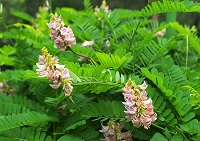The use of Medicinal Plants for the treatment of Gonorrhoea and Syphilis in South West Bengal of India
Keywords:
Ethnobotany, Gonorrhoea, Syphilis, Women’s Health Care, Herbal Practitioners, Herbal PractitionersSouth West BengalAbstract
Gonorrhoea and Syphilis as Sexually Transmitted Infections occur throughout the world. In India the prevalence of these diseases are in alarming situation due to the rapid spread of the diseases, high cost of treatment and the increased risk of transmission. Current therapies available for symptomatic treatment are quite expensive beyond the reach of common people and associated with the emergence of drug resistance. Many patients seeking help from the alternative systems of medicines for treatment. In our country several crude plants are used as medicine since Vedic period. Herbal medicines provide rational means for the treatment of many Sexually Transmitted Infections. The herbal medicines have many advantages: have no side effects, better patient tolerance and relatively less expensive. Locally available herbal practitioners or healers have practiced since past in this direction. Furthermore the acceptability of herbal medicines are greater to control these infections due to the social stigma associated with them and in case of women it is much more acceptable to discuss their problem with the traditional healers or herbal medical practitioners. In the present study thirty seven medicinal plants have been recorded for the treatment of Gonorrhoea and Syphilis and documented from South West Bengal of India.
References
Pullaiah T, Murthy KSR, Goud PSP, Kumar TDC, Vijayakumar R. Medicinal plants used by the tribals of Nallamalais, Eastern Ghats of India. Journ Tropical Medicinal Plants. 2003;4(2):237-244.
Adler M, Cowan F, French P, Mitchell H, Richens J. ABC of Sexually Transmitted Infections. 5th ed: London. BMJ Publishing Group Ltd.; 2004;p.1-87.
Khandwalla HE, Luby S, Rahman S. Knowledge, attitudes, and practices regarding sexually transmitted infections among general practitioners and medical specialists in Karachi, Pakistan. Sex Transm Infect. 2000; 76:383–385.
Voeten HA, Otido JM, O'Hara HB, Kuperus AG, Borsboom GJ, Ndinya-Achola JO, Bwayo JJ, Habbema JD. Quality of sexually transmitted disease case management in Nairobi, Kenya: a comparison among different types of healthcare facilities. Sex Transm Dis. 2001; 28:633– 642.
Sihavong A, Lundborg CS, Syhakhang L, Vernby A, Panyanouvong A, Marions L, Wahlström R. Health providers’ competence in the management of reproductive tract infections in Vientiane, Lao People’s Democratic Republic. Int J STD AIDS. 2007; 18(11):774 –781.
Mayaud P, Mabey D. Approaches to the control of sexually transmitted infections in developing countries: old problems and modern challenges. Sex Transm Infect. 2004; 80:174 –182.
Bang RA, Bang AT, Baitule M, Choudhary T, Sarmukaddam S, Tale O. High prevalence of gynaecological diseases in rural Indian women. Lancet. 1989;1:85-88.
Vermani K, Garg S. Herbal medicines for sexually transmitted diseases and AIDS. J Ethnopharmacol. 2002; 80:49-66.
Wasserheit, J.N. Epidemiological synergy. Interrelationships between human immunodeficiency virus infection and other sexually transmitted diseases. Family Planning Perspectives. 1992;24 (2):75-/84.
Bentham G, Hooker JD. Genera Planterum. London. Lovell Reeve & Co.; 1862-1883:1-3.
Prain D. Bengal Plants. Dehra Dun. Bishen Singh Mahendra Pal Singh; 1903:1-2.
Maji S. Study of Midnapore District Flora. PhD Thesis. Calcutta University, Botany Department; 1978.
Sanyal MN. Flora of Bankura District. Dehra Dun. Bishen Singh Mahendra Pal Singh; 1994.
Cook CDK. Aquatic and Wetland Plants of India. New York. Oxford University Press; 1996.
Pal DC, Jain SK. Tribal Medicine. Kolkata. Naya Prakash; 1998.
Paria ND, Chattopadhyay SP. Flora of Hazaribagh District, Bihar. Calcutta. Bot Survey of India; 2000:1: p.1-547.
Paria ND, Chattopadhyay SP. Flora of Hazaribagh District, Bihar. Calcutta. Bot Survey of India; 2005: 2: p. 548-1299.
Paria ND. Medicinal plant resources of South West Bengal. Kolkata. Directorate of Forest, Govt. of West Bengal; 2005:1-2.
Singh AK. A contribution to the aquatic and Wetland flora of Varanasi. J Econ Taxon Bot. 2006; 30(1): 6-24.
Brummitt RK, Powell CE. Author of Plant Names. Kew. Royal Botanic Garden; 1992.
Pandey, AK, Bisaria AK. Rational utilization of important medicinal Plants: A tool for conservation. Indian Forester. 1998; 124(4):197-206.
Al-Fatimi M, Wurster M, Schroder G, Lindequist U. Antioxidant, antimicrobial and cytotoxic activities of selected medicinal plants from Yemen. J Ethnopharmacol. 2007;111: 657–66.
Rimbau V, Cerdan C, Vila R, Iglesias J. Antiinflammatory activity of some extracts from plants used in the traditional medicine of North-African countries (II). Phytotherapy Res. 1999; 13: 128.



